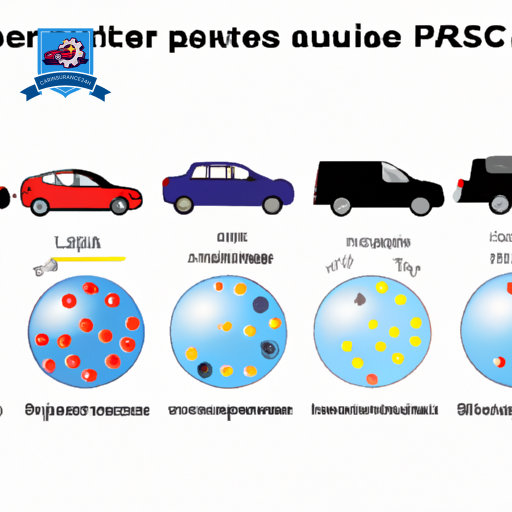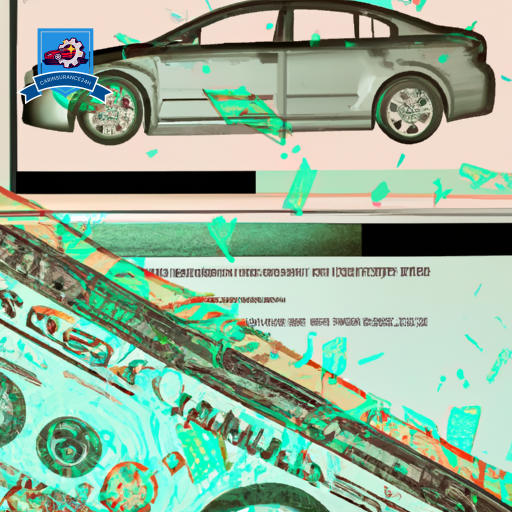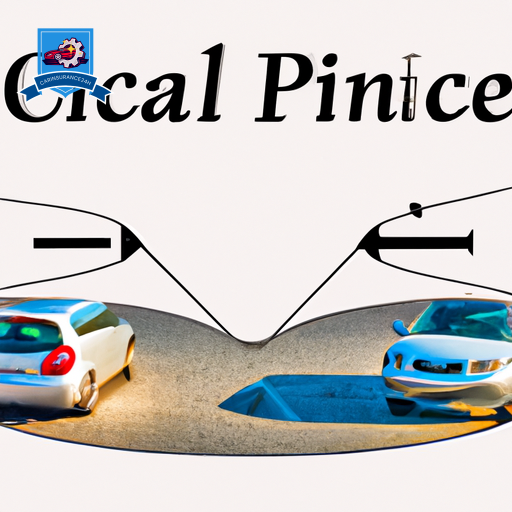In the domain of auto insurance, a single limit policy distinguishes itself by offering a consolidated coverage cap for both bodily injury and property damage in the event of an accident. This contrasts with traditional split limit policies, which set separate maximum payouts for individual categories of claims.
The streamlined nature of single limit policies simplifies the claims process, potentially providing broader protection under a singular, all-encompassing limit. However, the nuances of how these policies operate in practical scenarios, alongside their comparative advantages and considerations against split limit policies, warrant a closer examination.
This exploration will illuminate the pivotal factors that individuals must contemplate when selecting the most suitable auto insurance policy for their needs.
Understanding Single Limit Policies

Single limit car insurance policies consolidate bodily injury and property damage coverage into one vital limit, streamlining claims and coverage decisions. This policy definition diverges from the more traditional split limit policies, which set separate maximum payments for individual injuries, total injuries per accident, and property damage. The single limit approach offers a unified coverage ceiling that applies to all damages stemming from a single incident, irrespective of the categories into which these damages fall.
The nuances of coverage under a single limit policy are significant. By blending the coverage for bodily injuries and property damage, this type of policy simplifies the claims process. It avoids the complexities and limitations associated with dividing coverage limits among different types of damages. This consolidation allows policyholders to utilize their coverage more flexibly, applying the total available limit to whatever combination of bodily injury and property damage expenses arise from an accident.
However, understanding these nuances is vital for policyholders. The total limit selected when purchasing a single limit car insurance policy dictates the maximum amount the insurer will pay for all combined damages in the event of a claim. This aspect underscores the importance of choosing a sufficient limit to cover potential losses, considering the high costs associated with severe accidents.
Key Benefits Explained

Exploring the key benefits of single limit car insurance policies highlights their practical advantages for policyholders.
The simplified claims process eliminates the often complex calculations associated with split limit policies, streamlining post-accident procedures.
Additionally, the flexibility in coverage limits allows policyholders to customize protection to suit their unique needs, offering a tailored approach to insurance.
Simplified Claims Process
One of the primary advantages of single limit car insurance is its streamlined claims process, which guarantees the settlement of claims for policyholders. This approach enhances claim efficiency and guarantees process transparency, making it easier for policyholders to understand how their claims are being handled.
| Benefit | Description |
|---|---|
| Claim Efficiency | Reduces processing time and complexity, enabling faster claim resolution. |
| Process Transparency | Clear and straightforward procedures increase trust and satisfaction among policyholders. |
| Simplified Paperwork | Less documentation required, making the claims process less cumbersome. |
The simplified claims process inherent in single limit policies not only reduces the administrative burden on both the insurer and the insured but also accelerates the path to resolution, ensuring that policyholders can quickly recover from their losses without unnecessary delay.
Flexible Coverage Limits
Flexible coverage limits in car insurance provide a significant advantage by allowing policyholders to tailor their coverage to meet specific needs and circumstances. This approach emphasizes coverage customization, ensuring that individuals are neither underinsured nor overpaying for excessive coverage they may not require.
By offering policy flexibility, insurers empower customers to make informed decisions about their insurance based on their unique risk profiles and financial situations. This adaptability is particularly beneficial in dynamic environments where a policyholder’s circumstances, such as acquiring new assets or changes in financial status, may evolve.
Consequently, flexible coverage limits not only enhance customer satisfaction through personalized insurance solutions but also foster a more efficient allocation of resources, ensuring that policyholders maintain optimal levels of protection.
Comparing Single Vs Split Limits

When comparing single limit to split limit car insurance, it is essential to understand the key differences in coverage and financial protection they offer. Single limit policies provide a consolidated amount of coverage that can be applied to both bodily injury and property damage claims in a single accident, without separate limits. In contrast, split limit policies define specific maximum payouts for individual bodily injury per person, total bodily injury per accident, and property damage per accident.
The distinction between these two approaches primarily lies in how liability thresholds are structured. Single limit policies offer a significant advantage in flexibility, as the total coverage can be applied where it’s most needed, without the constraints of predefined limits for specific types of damages. This can be particularly beneficial in scenarios where claims for either bodily injury or property damage exceed typical amounts, allowing for thorough financial protection against high-cost incidents.
On the other hand, split limit policies offer a more segmented approach, which can be advantageous in managing policy costs. Since these policies allocate set amounts for different types of liabilities, insurers can more accurately assess risk and potentially offer lower premiums for coverage that matches the policyholder’s specific risk profile. However, this segmented coverage can also introduce the risk of insufficient protection in cases where the costs of damages or injuries surpass the designated limits for a particular category, potentially leaving the policyholder exposed to out-of-pocket expenses.
Coverage Limit Considerations

Understanding the implications of coverage limits is fundamental when selecting between single limit and split limit car insurance policies. Coverage limits directly influence the extent of financial protection provided to policyholders in the event of an accident. It’s essential to assess these limits in light of your specific needs, vehicle value, and risk exposure to make sure adequate protection.
Single limit policies offer a consolidated coverage amount for bodily injury and property damage per accident. This simplicity allows for flexible application of funds where they are most needed, potentially offering more substantial protection for high-cost claims. However, the inclusiveness of this coverage often comes at a higher policy cost compared to split limit policies. When evaluating policy costs, consider the potential out-of-pocket expenses you could face with inadequate coverage in a serious accident.
Industry standards can also guide your decision-making process. The insurance industry typically suggests minimum coverage limits, but these may not suffice for all drivers, especially those with significant assets to protect or those who frequently travel in high-traffic areas with greater accident risks. Higher coverage limits increase the policy cost but provide more extensive protection, reducing financial vulnerability.
Real-Life Application Examples

Exploring real-life scenarios demonstrates the practical benefits and versatility of single limit car insurance policies in diverse situations. Unlike traditional split limit policies, single limit insurance offers a consolidated coverage amount for bodily injury and property damage per accident. This unified approach provides a more flexible and often more all-encompassing protection in various accident scenarios. The following examples illustrate how single limit policies can be advantageous:
-
Multiple Injuries in One Accident: In a collision involving several vehicles, a single limit policy can cover medical expenses for all injured parties without the constraints of per-person limits.
-
High-Cost Property Damage: When an insured driver causes significant damage to an expensive vehicle or property, the single limit policy allows for a higher payout for property damage, unlike policies with separate, lower property damage limits.
-
Legal Costs and Settlements: Single limit policies can provide substantial funds towards legal defense and settlements in lawsuits resulting from an accident, offering broader financial protection.
-
Severe Single Injury Claims: If one person sustains severe injuries requiring extensive medical treatment, the single limit’s flexibility provides sufficient coverage without the per-person limit restriction.
-
Policy Exceptions and Unusual Costs: In scenarios where unusual costs arise, such as environmental cleanup or damage to public infrastructure, single limit policies may offer a more adaptable coverage solution, subject to policy exceptions and terms.
These examples underscore the importance of understanding the specific benefits and limitations of single limit car insurance policies, particularly in how they apply to real-world accident scenarios and the potential for policy exceptions to influence coverage.
Choosing the Right Policy for You

Having considered the advantages and practical applications of single limit car insurance, it is imperative for individuals to evaluate their unique needs to select the most suitable policy. This decision-making process should weigh two critical factors: policy cost and coverage adequacy. An informed choice guarantees not only financial efficiency but also a thorough safety net in the event of an unforeseen incident.
First and foremost, policy cost is an essential consideration. While single limit policies might offer a broad umbrella of protection, they can come with a higher premium compared to split limit policies. Individuals must assess their financial capability to sustain such premiums without compromising other financial obligations. It’s advisable to compare quotes from various insurers, taking into account the value of assets needing protection, to find a balance between cost and coverage.
On the other hand, coverage adequacy cannot be overlooked. The primary allure of a single limit policy lies in its ability to provide substantial coverage without the restrictions of defined limits for property damage and bodily injury per person. This aspect is particularly critical for individuals with significant assets or those who frequently find themselves in situations with higher liability risks. It’s essential to conduct a risk assessment, considering current assets and potential future acquisitions, to make sure the chosen policy offers adequate protection.
Frequently Asked Questions
How Does a Single Limit Policy Impact My Premiums Compared to Traditional Split Limit Policies?
A single limit policy generally affects premium calculation by potentially increasing rates due to its broader coverage flexibility compared to traditional split limit policies. This enhanced policy flexibility may justify the higher premiums for some policyholders.
Can a Single Limit Policy Be Customized to Include Specific Types of Coverage Such as Uninsured Motorist or Comprehensive Coverage?
Ironically, the quest for coverage flexibility leads one to discover that policy personalization, indeed, allows for the inclusion of specific types such as uninsured motorist or all-inclusive coverage within a single limit policy framework.
What Happens if My Single Limit Policy’s Coverage Is Exhausted in a Claim? Are There Any Additional Out-Of-Pocket Risks Compared to Split Limit Policies?
If a single limit policy’s coverage is exhausted in a claim, the policyholder may face additional out-of-pocket risks and legal implications. This scenario might also impact the terms and conditions during policy renewal discussions.
How Do State Laws and Regulations Affect the Availability and Requirements for Single Limit Policies in Car Insurance?
State compliance and regulatory variations greatly influence the availability and requirements of car insurance policies. Laws differ by state, dictating whether single limit policies can be offered and outlining the specific conditions under which they are permitted.
Are There Any Specific Scenarios or Types of Drivers for Whom a Single Limit Policy Is Particularly Advantageous or Disadvantageous?
Single limit policies offer distinct advantages and disadvantages, influenced by driver demographics and policy flexibility. Specifically advantageous for those seeking inclusive coverage, they may not suit drivers with minimal asset protection needs or lower risk profiles.










